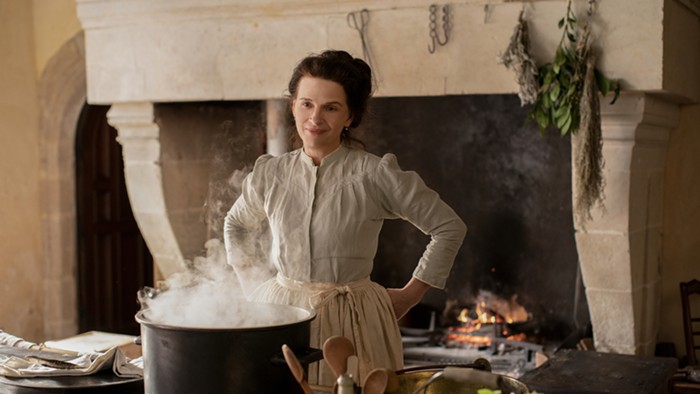
They’re the 24th century’s most iconic queer couple that almost never was: Garak and Bashir, two close companions on Star Trek: Deep Space Nine. The show was a darker ‘90s follow-up to Star Trek: The Next Generation, set on a remote space station. Early in the first season, we see a charismatic shopkeeper named Garak introduce himself to the station’s nervous newly-arrived doctor, Julian Bashir.
Their interaction is immediately flirtatious, which was shocking considering the era in which it aired — early 1993, when queer characters were regarded as a daring novelty on television. Just a few years earlier when Thirtysomething depicted two male lovers, advertisers pulled $500,000 worth of ads; later in 1993, queer characters on Tales of the City would prompt Republicans to call for a cancellation not just of the show, but of the entire Public Broadcasting System.
So why did DS9’s producers decide to take such a huge risk with a gay couple on their new show? They didn’t. It was all the sly work of one actor who saw an opportunity to slip some subtext under the showrunners’ noses.
Since its start in the mid-1960s, Star Trek has had a reputation for breaking boundaries. Creator Gene Roddenberry was one of the only producers who would hire women to write; he made sure to feature characters of various ethnicities; and he fought to put one of the first interracial kisses on the air. (There had been others, but Star Trek’s was the most prominent to date.)
That’s not to say the show was perfect — it can be shockingly sexist, managing to fail the Bechdel Test with a determination that seems almost impressive. In one episode, the Enterprise stops at “a planet dominated by women” who give the ship’s computer a female “personality,” which means that its voice becomes sensual, affectionate, and tinged with giggles.
But given its time, Star Trek still managed to make a name for itself as one of the most progressive shows on television, despite the original series only running from 1966 to 1969. Given that history, it might make sense that the franchise would be ready to tackle queer couples like Garak and Bashir when it returned to television with The Next Generation in the late ‘80s.
Alas, it was not. Creator Gene Roddenberry promised that there would be gay characters, and writer David Gerrold even wrote a script to fulfill that promise for TNG’s first season. But Gene’s health was failing, and a team of producers was taking over that was clearly averse to showing anything queer. They axed the script with two gay men; when Gene proposed showing same-sex couples in the background, they told a writer to ignore him. A guest character whose gender identity changes is deemed un-romanceable (though one of the characters offers, “perhaps one day our ability to love won’t be so limited”).
So by the time Deep Space Nine came along in 1993, it seemed as though the franchise’s interest in trailblazing had gone cold.
But one actor decided to take things into his own hands. Andrew Robinson had been hired to play the character Garak, a charismatic tailor who might also be a spy for the recently-departed Cardassian army. In reading the script, Robinson started to wonder why his character would introduce himself to Bashir, and decided that the interest was, at least at first, sexual. And so he threw himself into a flirtatious delivery: He locks eyes, he smiles, he offers physical touch. Every line of dialogue seems to feature hungry air quotes.
Not everyone picked up on the delivery, but many in the audience did; and Garak/Bashir fan works exploded on what was, at the time, a relatively young Internet. But alas, the writers of the show avoided any explicit exploration of their relationship. Though Garak would return for all seven seasons of Deep Space Nine, the flirtation remained subtextual, never explicit. Years later, showrunner and writer Ira Steven Behr would express remorse at their failure to plumb those depths, and said that he wished they’d had Garak come out as gay so they could have explored the relationship further.
Fortunately, though, fan works were far less inhibited. Starting on Usenet forums and then moving to Fanfiction.net and later ArchiveOfOurOwn.com, thousands of stories and images (some quite bawdy!) examined the pairing of Garak and Bashir from every conceivable angle. Robinson himself contributed to the discourse, writing a novel about his character that took the form of an extended, affectionate letter to Bashir.
And finally, last year — two decades after the series ended — the actors who played Garak and Bashir reunited for readings of fan-written scripts, including one on which their characters are married. Meanwhile, with the Star Trek franchise under new leadership, Discovery and Picard have introduced queer characters, and even updated old ones to have had same-sex romances in the intervening years.
It’s disappointing that the people running the show back in the ‘90s were unwilling to follow Gene’s lead. But it’s also unsurprising that fans were willing to take matters into their own hands. Star Trek has always attracted a fandom that dreams of humanity at its best — a philosophy that Gene himself distilled into a simple concept: Infinite diversity in infinite combinations.



















